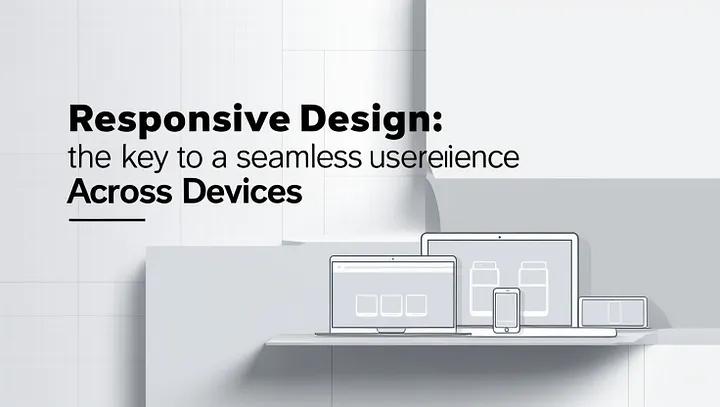Responsive Design: The Key to a Seamless User Experience Across Devices
10/25/2024

In the digital age, users access websites on a wide range of devices, from smartphones and tablets to desktops and laptops. With the increasing diversity in screen sizes and resolutions, it has become essential for businesses to ensure that their websites provide a consistent and user-friendly experience across all devices. This is where responsive design comes into play. In this article, we’ll explore what responsive design is, why it’s crucial for your business, and how you can implement it effectively.
What is Responsive Design?
Responsive design is an approach to web design that ensures a website’s layout and content adapt smoothly to different screen sizes and orientations. Instead of creating separate versions of a website for each device, responsive design allows a single website to adjust dynamically based on the user’s device. This is achieved through the use of flexible grids, fluid images, and CSS media queries.
Why is Responsive Design Important for Your Business?
- Improved User Experience: A responsive website offers a seamless experience, regardless of the device being used. This enhances user satisfaction, which can lead to increased engagement, lower bounce rates, and higher conversion rates.
- Cost-Effective: Maintaining one responsive website is more cost-effective than creating and managing separate websites for different devices. It also simplifies updates and maintenance.
- SEO Benefits: Google favors mobile-friendly websites in its search rankings. By implementing responsive design, you improve your site’s visibility on search engines, leading to more organic traffic.
- Future-Proofing: As new devices with varying screen sizes continue to emerge, a responsive design ensures your website remains accessible and functional without needing major overhauls.
Key Elements of Responsive Design
To create a responsive website, you need to consider several key elements:
1. Flexible Grid Layouts
A flexible grid layout allows your website to adapt to different screen sizes by using relative units like percentages instead of fixed units like pixels. This ensures that your website’s elements resize proportionally across devices.
2. Fluid Images
Fluid images scale within the confines of their containers, ensuring they don’t overflow or become distorted on smaller screens. This is typically achieved by setting the image’s maximum width to 100% in CSS.
3. Media Queries
CSS media queries enable you to apply different styles based on the device’s characteristics, such as its width, height, resolution, and orientation. For example, you can use media queries to adjust font sizes, rearrange elements, or hide certain features on smaller screens.
4. Mobile-First Approach
The mobile-first approach involves designing your website for mobile devices first, then progressively enhancing it for larger screens. This ensures that your website is optimized for the smallest, most common devices and provides a solid foundation for scaling up.
Implementing Responsive Design: Best Practices
- Prioritize Content: Identify the most important content for your users and ensure it’s easily accessible on all devices. Avoid overwhelming users with too much information on small screens.
- Optimize Navigation: Simplify your navigation for smaller screens by using dropdown menus, collapsible sections, or off-canvas menus. This helps users easily find what they’re looking for without cluttering the interface.
- Test Across Devices: Regularly test your website on various devices and screen sizes to ensure it looks and functions as intended. Use tools like Google’s Mobile-Friendly Test and BrowserStack to check responsiveness.
- Focus on Performance: Mobile users expect fast-loading websites. Optimize your site’s performance by minimizing file sizes, using lazy loading for images, and leveraging browser caching.
- Accessibility Considerations: Ensure your responsive design is accessible to all users, including those with disabilities. Use proper HTML semantics, provide alternative text for images, and ensure sufficient color contrast.
Conclusion
Responsive design is no longer just an option; it’s a necessity in today’s multi-device world. By implementing a responsive design, you ensure that your website provides a consistent, user-friendly experience across all devices, helping to increase user satisfaction, improve SEO, and future-proof your online presence.
Ready to make your website responsive? At Soultware, we specialize in creating responsive websites that deliver exceptional user experiences on any device. Contact us today at soultware.com to learn how we can help you optimize your online presence!